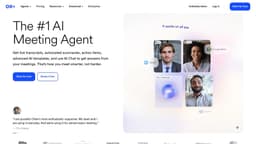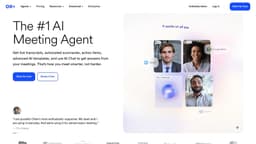Turning spoken words into searchable, editable text is no longer a futuristic concept; it's a daily necessity for professionals across industries. From sales teams capturing client call details to developers integrating voice commands, the demand for fast, accurate transcription is universal. But with so many options available, choosing the right tool can be a significant challenge. This guide simplifies that decision by providing a detailed, side-by-side comparison of the top speech to text software available today.
We cut through the marketing noise to give you a clear, actionable overview of each platform. You'll find a detailed analysis of tools like Nuance Dragon, Otter.ai, Descript, and Rev.com, as well as enterprise-level solutions from Microsoft, Google, and Amazon. Each review is structured for easy comparison, covering key features, pricing models, specific use cases, and the distinct pros and cons.
Our goal is to help you identify the perfect solution for your specific needs, whether you're a freelancer transcribing interviews or a CTO implementing a voice-enabled workflow for your entire organization. We’ve included direct links and screenshots for each tool, so you can see them in action and make an informed choice quickly. Let’s dive in and find the software that will best amplify your voice.
1. Nuance Dragon
Nuance Dragon has long been the gold standard for professional-grade dictation, making it one of the top speech to text software choices for users who require exceptional accuracy and deep customization. Unlike many browser-based tools, Dragon is a robust desktop application that learns your voice and adapts over time, achieving accuracy rates that can exceed 99% right out of the box.
Its primary strength lies in its specialization and control. Professionals in fields like law, medicine, and academia can leverage industry-specific vocabularies to ensure technical terms are transcribed correctly. Users can also create custom voice commands to automate repetitive tasks, such as inserting a signature block, filling out a form, or launching applications. This level of control makes it a powerful tool for boosting productivity and an essential accessibility aid for individuals with repetitive strain injuries (RSI).
Who It's For
Dragon is ideal for professionals who dictate long-form documents and require maximum accuracy and efficiency. This includes lawyers, doctors, authors, and anyone who needs to control their computer extensively with their voice. It's a premium solution designed for power users rather than casual note-takers.
Pros:
- Mature, enterprise-grade dictation with proven reliability.
- Extensive customization for vocabulary, formatting, and macros.
- Specialized versions available for legal and medical industries.
Cons:
- Primarily Windows-focused; native Mac support for newer versions is limited.
- Purchasing from the US web store is temporarily paused during a platform update.
Pricing: Dragon offers various products, from one-time purchases like Dragon Professional ($699) to subscription-based cloud solutions.
Visit Website: Nuance Dragon
2. Otter.ai
Otter.ai has carved out a unique space in the speech-to-text software landscape by focusing on a specific, high-value use case: meetings. It acts as an AI meeting assistant, integrating directly with platforms like Zoom, Google Meet, and Microsoft Teams to record, transcribe, and summarize conversations in real time. This transforms spoken dialogue into actionable, searchable text that teams can easily reference.
Its core strength lies in collaborative intelligence. Otter.ai not only transcribes but also identifies different speakers, generates a concise summary with action items, and allows teammates to highlight, comment on, and share key moments from the transcript. This focus on post-meeting productivity makes it an indispensable tool for teams looking to eliminate manual note-taking and ensure everyone stays aligned, regardless of whether they attended the meeting live. If you're new to the platform, you can learn more about what Otter.ai is and how it works.
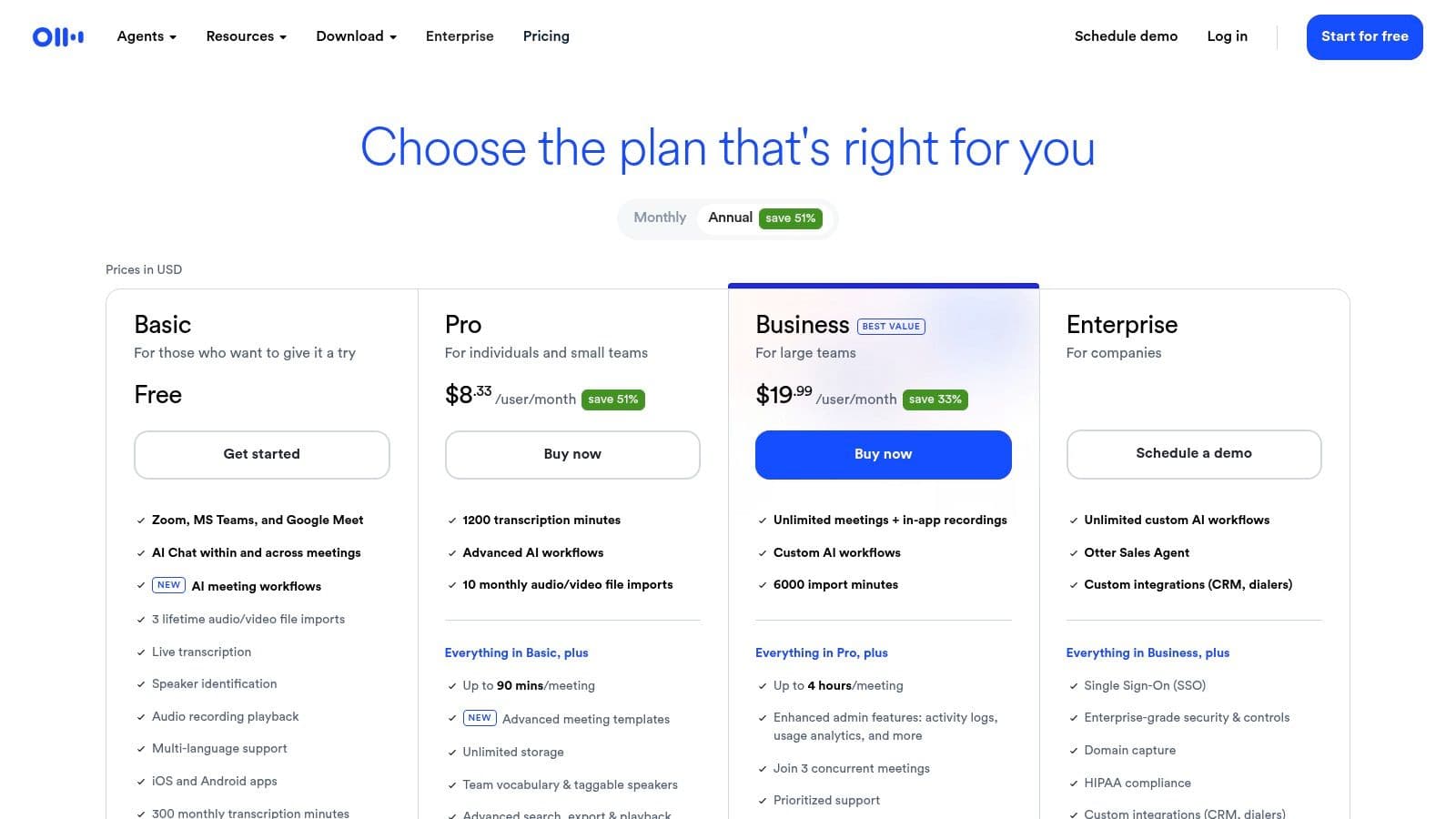
Who It's For
Otter.ai is perfect for teams and individuals who spend a significant amount of time in virtual meetings. This includes remote teams, project managers, sales professionals, consultants, and students who need accurate records of discussions, lectures, and interviews. It is designed for collaboration and summary rather than pure, long-form dictation.
Pros:
- Excellent for transcribing multi-speaker meetings and interviews.
- Seamless integration with major video conferencing platforms.
- Automated summaries and action items boost post-meeting productivity.
Cons:
- Free and lower-tier plans have limitations on transcription minutes.
- Some users report occasional billing and customer support frustrations.
Pricing: Otter.ai offers a free tier with limited monthly minutes, a Pro plan for individuals at 16.99/month, and a Business plan at 35/user/month with more advanced features.
Visit Website: Otter.ai
3. Descript
Descript redefines transcription by integrating it directly into a powerful audio and video editing suite, making it a standout choice for content creators. Instead of just providing a text file, Descript treats your media like a word document. You can edit your audio or video simply by deleting words or sentences from the transcript, a workflow that dramatically speeds up the editing process for podcasters, YouTubers, and marketers.
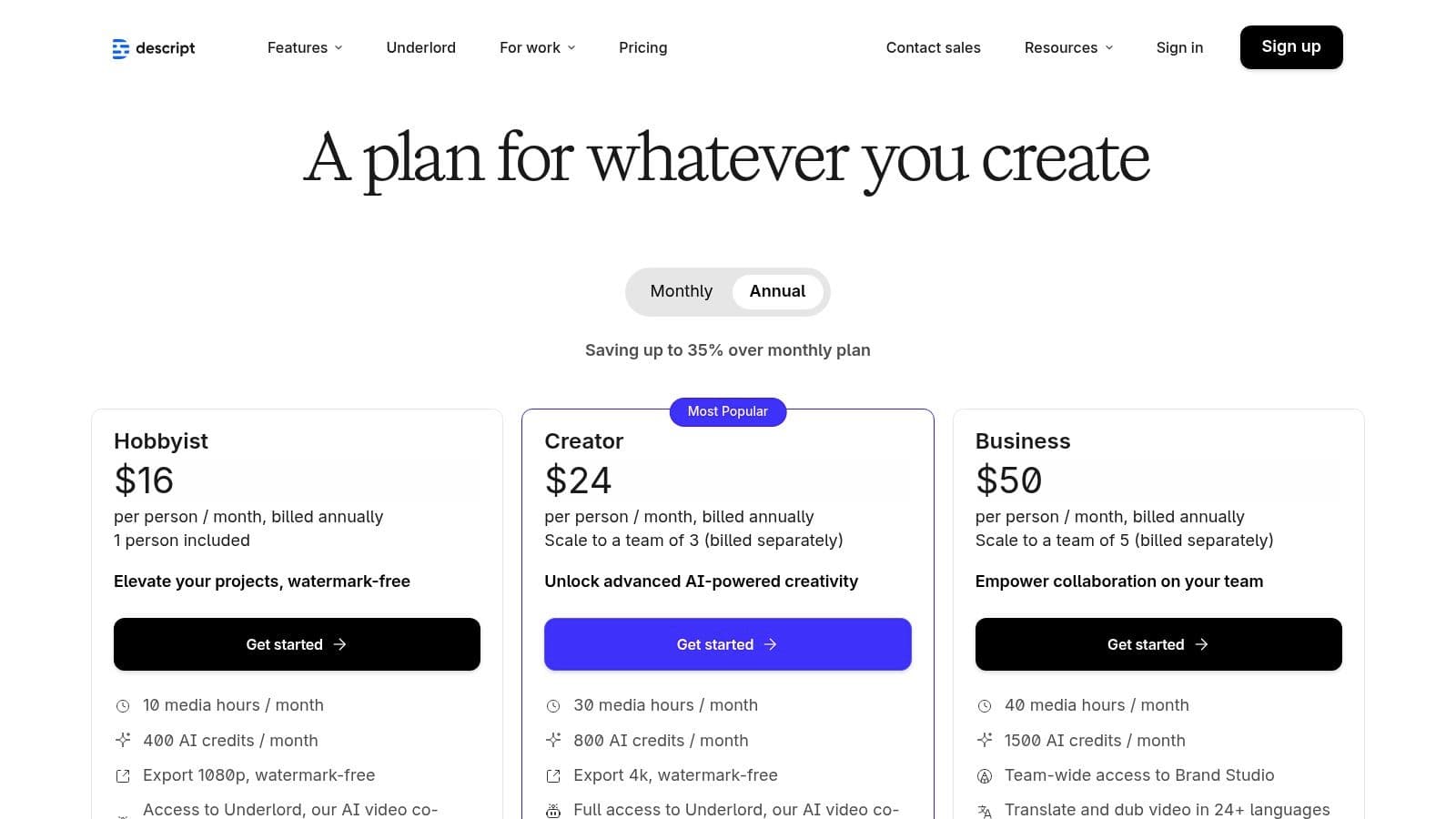
Its primary strength is this "edit by text" model, which lowers the barrier to entry for media editing. The platform also includes advanced AI features like Studio Sound, which enhances voice recordings to professional quality with a single click, and Overdub, which allows you to create an AI clone of your voice to correct mistakes or add new words. This combination of intuitive transcription and creative tools makes it a top speech to text software for anyone producing polished media content.
Who It's For
Descript is built for content creators, including podcasters, video producers, marketers, and educators. It is also ideal for collaborative teams who need to review, comment on, and edit media files efficiently. It’s perfect for anyone whose workflow involves turning raw recordings into finished, distributable content without needing to master complex, traditional editing software.
Pros:
- Combines transcription with a full audio/video editing workflow.
- Intuitive "edit-by-text" interface is easy for beginners to learn.
- Powerful AI features like Overdub and automatic filler word removal.
Cons:
- The application can be resource-intensive on some computers.
- Frequent updates can sometimes introduce UI changes or occasional instability.
Pricing: Descript offers a free plan with limited features. Paid plans start at $12/editor/month (billed annually) for the Creator plan and go up to custom pricing for Enterprise solutions.
Visit Website: Descript
4. Rev.com
Rev.com secures its place as a top speech to text software by offering a powerful hybrid model that combines industry-leading AI transcription with a highly accurate, human-powered service. This unique approach allows users to choose the right balance of speed, cost, and precision for their specific needs. While its AI offers a rapid and affordable solution for general use, its human transcription service provides near-perfect accuracy, making it an indispensable tool for projects where clarity and correctness are non-negotiable.
The platform is built for flexibility, catering to everyone from individual freelancers to large enterprises requiring compliance and scale. Its straightforward, per-minute pricing for human services demystifies costs, while team plans offer pooled AI minutes and discounts, making it easy to manage transcription budgets. With dedicated apps for recording on the go and integrations with meeting platforms like Zoom and Teams, Rev.com seamlessly fits into existing workflows, providing accurate transcripts, captions, and subtitles exactly when they are needed.
Who It's For
Rev.com is ideal for professionals, teams, and organizations that need both fast AI-driven transcripts for everyday tasks and guaranteed-accuracy human transcripts for critical content. This includes content creators, journalists, researchers, legal professionals, and businesses that require reliable records of meetings, interviews, or video content for accessibility and compliance.
Pros:
- Clear and transparent per-minute pricing for human transcription.
- Scales effectively from individual users to large enterprise clients.
- Offers a reliable human-powered option alongside its AI transcription service.
Cons:
- Human transcription is significantly more expensive and has a longer turnaround time than automated AI solutions.
Pricing: Human transcription starts at 1.50 per minute. AI transcription is available via a subscription starting at 29.99/month (billed annually) for 1,200 minutes per year. You can explore more details on the Rev.com pricing page.
Visit Website: Rev.com
5. Microsoft 365 (Transcribe in Word and OneNote)
For those already working within the Microsoft ecosystem, the built-in Transcribe feature in Word and OneNote is one of the most convenient and privacy-aware options available. This tool, primarily accessed through the web versions of the apps, allows Microsoft 365 subscribers to upload audio recordings directly and receive a timestamped, speaker-separated (diarized) transcript. This integration makes it a top speech to text software solution for users who value simplicity and workflow efficiency.
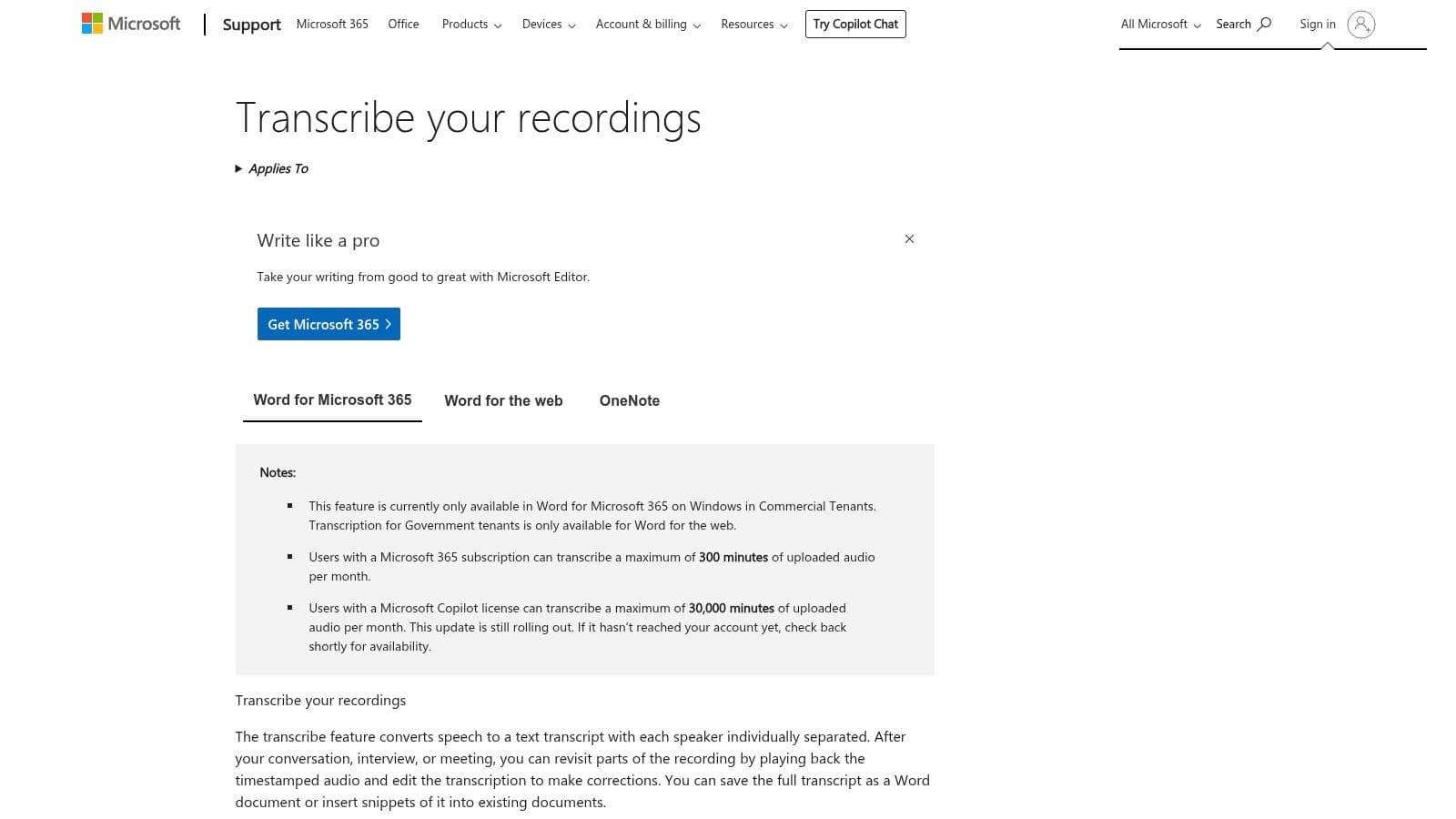
The primary advantage of this feature is its seamless connection to your documents and cloud storage. Once a file is transcribed, you can easily insert the full text or specific snippets directly into your Word document or OneNote page with a single click. The audio files and transcripts are stored securely in your OneDrive, leveraging Microsoft's robust security and privacy controls. This makes it an excellent choice for transcribing sensitive meetings, interviews, or lectures without sending data to a third-party service.
Who It's For
This tool is ideal for students, office professionals, and anyone who is a Microsoft 365 subscriber and needs a quick, straightforward way to transcribe audio for reports, notes, or articles. It is perfect for users who conduct occasional interviews or record meetings and want to embed the transcriptions directly into their working documents without leaving the Microsoft environment.
Pros:
- No additional software purchase needed for Microsoft 365 subscribers.
- Excellent for ad-hoc interviews, lectures, and meeting notes.
- Benefits from strong Microsoft privacy and security standards.
Cons:
- Standard subscribers are subject to monthly upload limits (typically 300 minutes).
- Primarily available in the web apps; desktop availability can vary.
Pricing: The Transcribe feature is included with a Microsoft 365 Personal or Family subscription (starting at $6.99/month). Upload limits can be increased with advanced licenses like Microsoft 365 Copilot.
Visit Website: Microsoft 365 Transcribe
6. Google Cloud Speech-to-Text
Google Cloud Speech-to-Text is not a consumer-facing application but a powerful, developer-focused API that allows businesses to integrate Google's advanced transcription technology directly into their own products and workflows. This makes it one of the top speech to text software choices for companies needing to build custom solutions, such as transcribing call center audio, captioning media content, or enabling voice control in an application. It leverages the same AI models that power Google's own products, offering high accuracy across a vast range of languages.
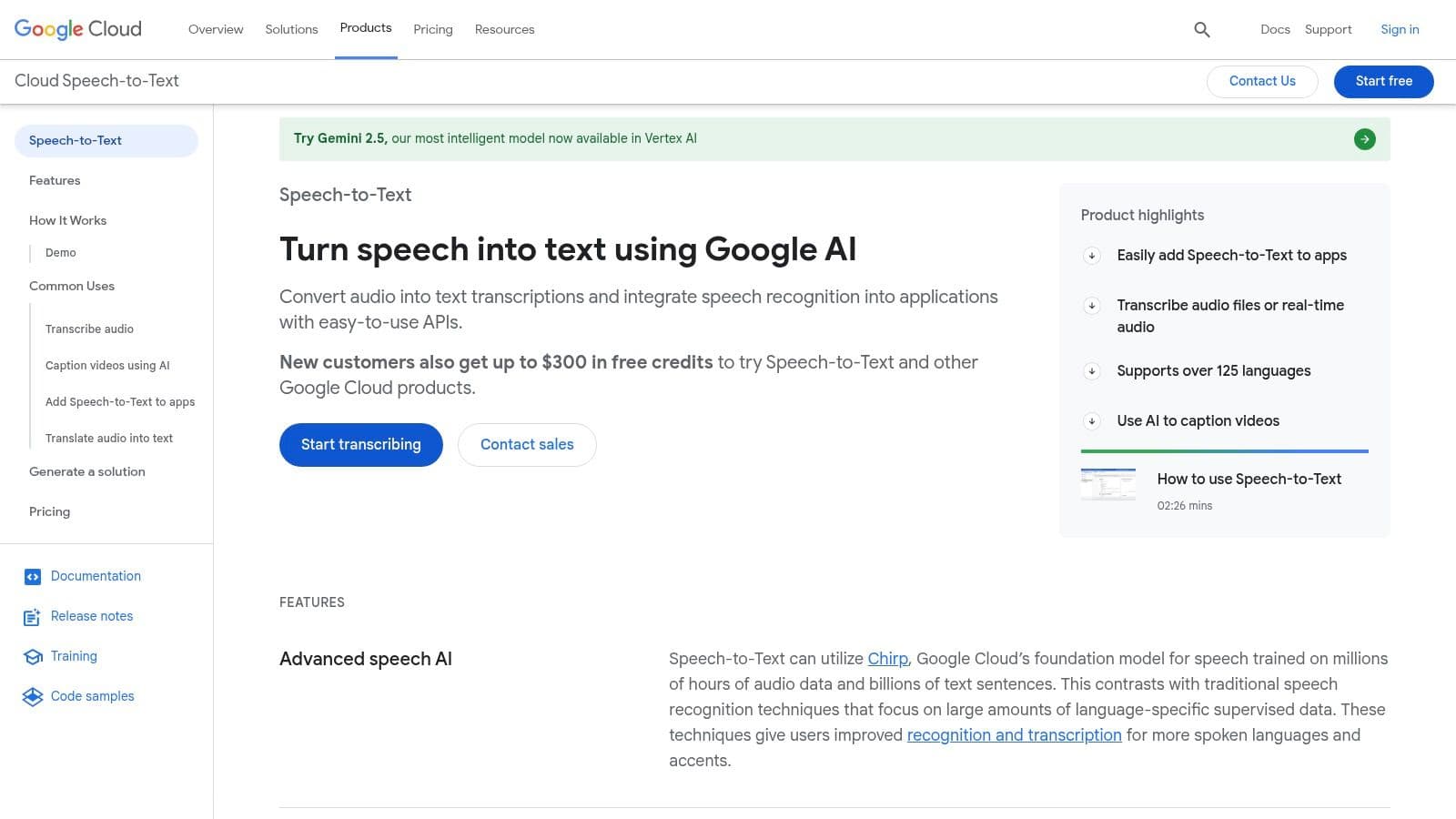
The platform's core strength is its sheer scalability and flexibility. It can process audio in real-time streams or from pre-recorded files, automatically identify different speakers (diarization), and provide word-level timestamps. With specialized models for telephony, video, and short commands, developers can choose the optimal configuration for their specific use case, ensuring both performance and cost-efficiency. This API-first approach allows for deep integration into enterprise systems, analytics pipelines, and customer-facing apps.
Who It's For
This platform is built for developers, data scientists, and businesses that need to incorporate transcription services into their own software, applications, or internal processes. It's perfect for startups creating voice-enabled products, contact centers analyzing customer interactions, and media companies generating automated captions. It is not intended for individuals looking for a simple dictation tool.
Pros:
- Scales from small prototypes to high-volume enterprise workloads.
- Competitive and transparent usage-based pricing with a generous free tier.
- Extensive language support and advanced features like speaker diarization.
Cons:
- Requires developer knowledge to set up and integrate.
- Setup process involves configuring a Google Cloud project with billing and authentication.
Pricing: Google Cloud offers a "pay-as-you-go" pricing model based on the amount of audio processed per month. New customers receive free credits and a monthly allowance of free transcription minutes.
Visit Website: Google Cloud Speech-to-Text
7. Amazon Transcribe (AWS)
Amazon Transcribe is a core component of Amazon Web Services (AWS) that provides highly accurate and scalable automatic speech recognition (ASR). Rather than a standalone app, it is a powerful API-driven service designed for developers and businesses to integrate into their existing workflows and applications. It excels at handling large volumes of audio, making it a top speech to text software solution for enterprise-level needs like call center analytics, media content analysis, and compliance monitoring.
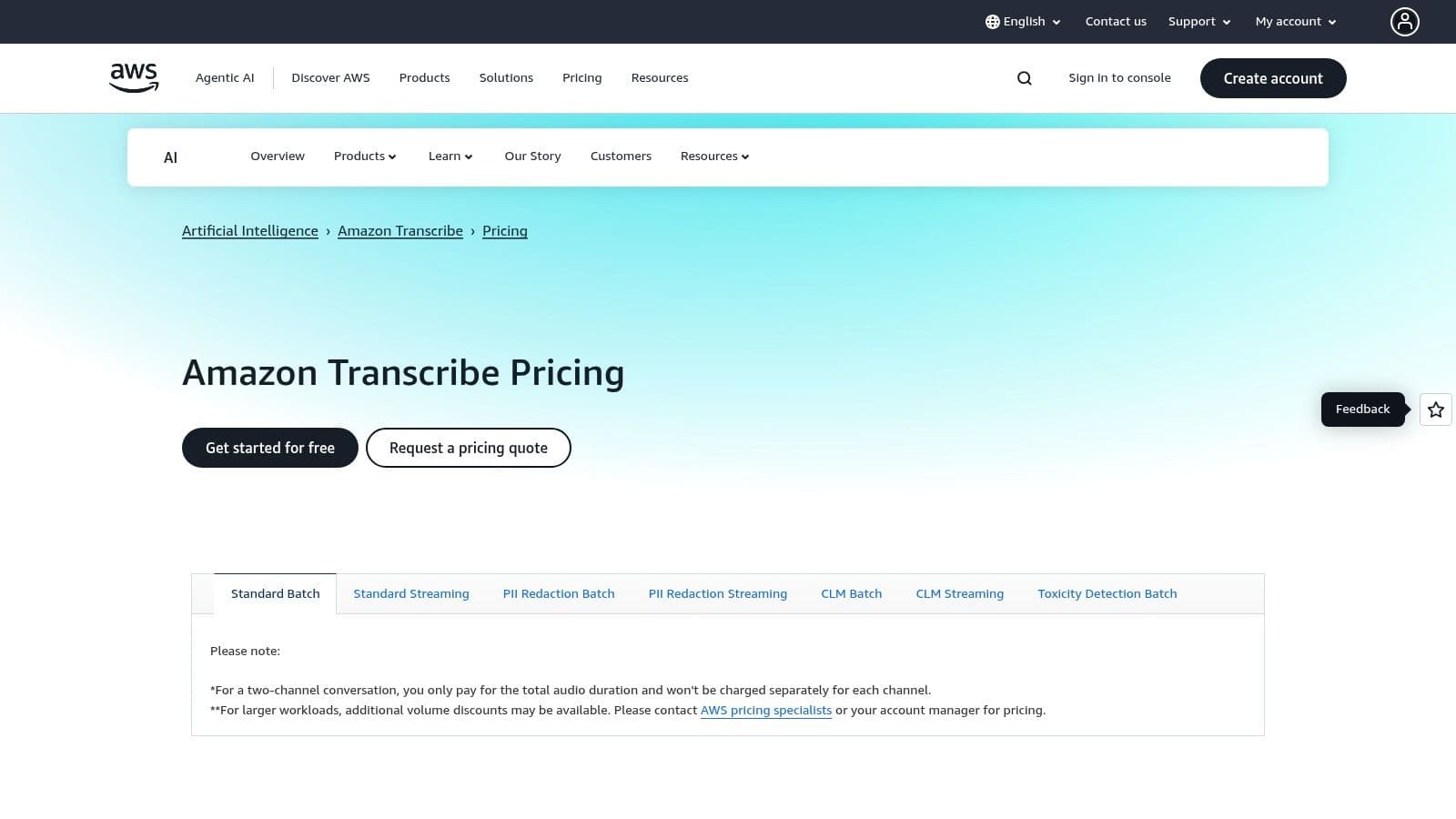
Its key differentiator is its deep integration within the extensive AWS ecosystem. Users can process audio files stored in Amazon S3, trigger transcriptions with AWS Lambda functions, and analyze the output with services like Amazon Comprehend for sentiment analysis. Amazon Transcribe also offers specialized features like speaker diarization (labeling who spoke when), channel separation for multi-channel audio, and advanced PII redaction to protect sensitive customer data. For those in healthcare, Amazon Transcribe Medical is HIPAA-eligible and trained on medical terminology. Learn more about the best AI transcription software options for 2025 and see how it compares.
